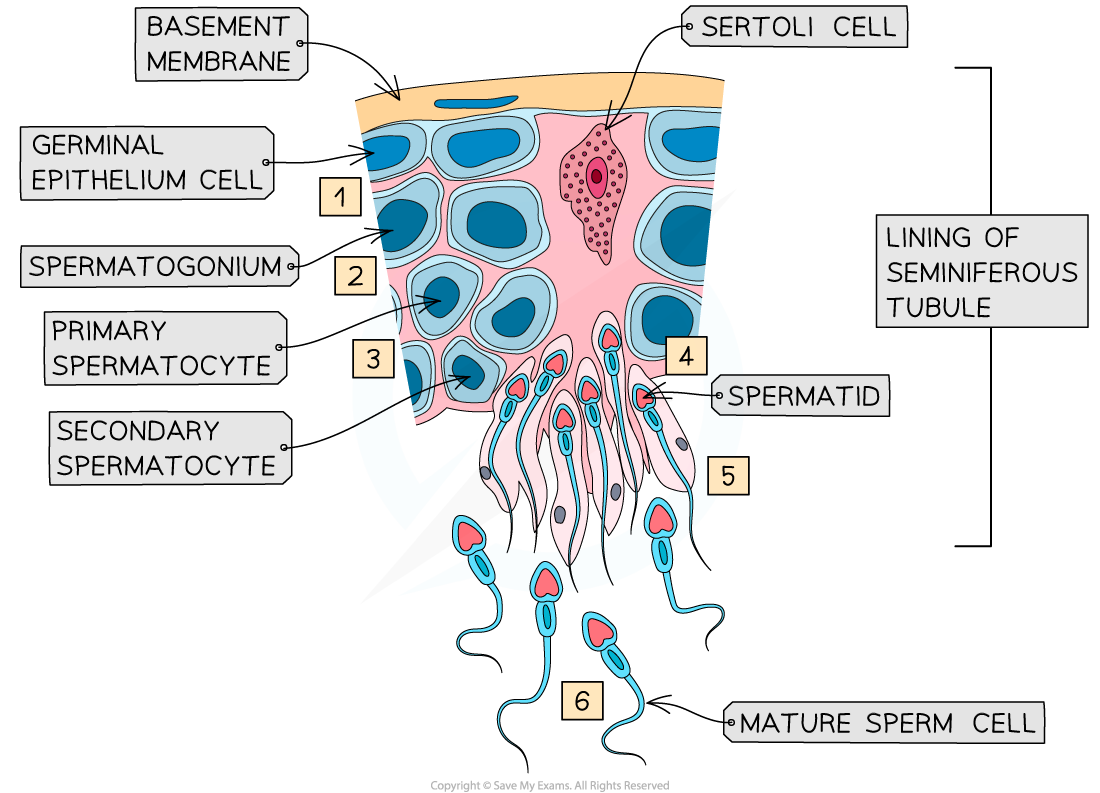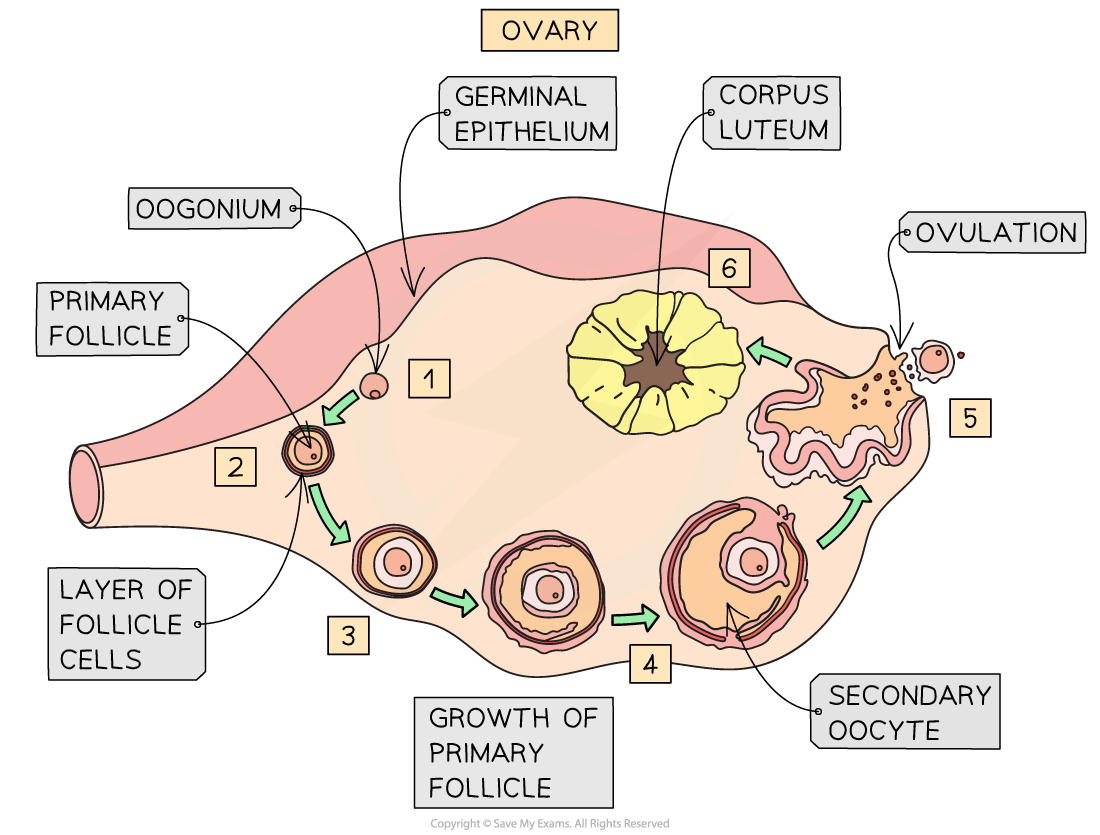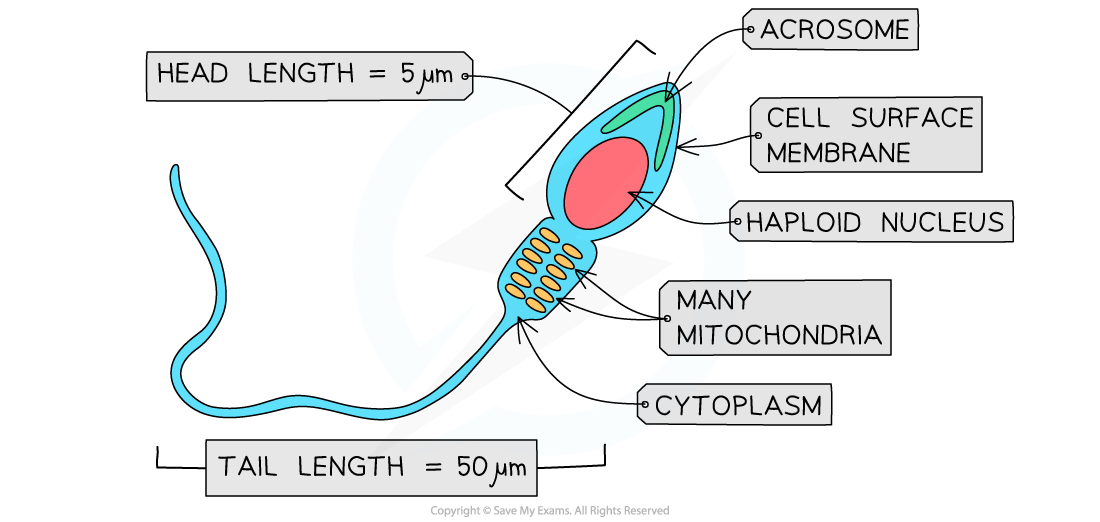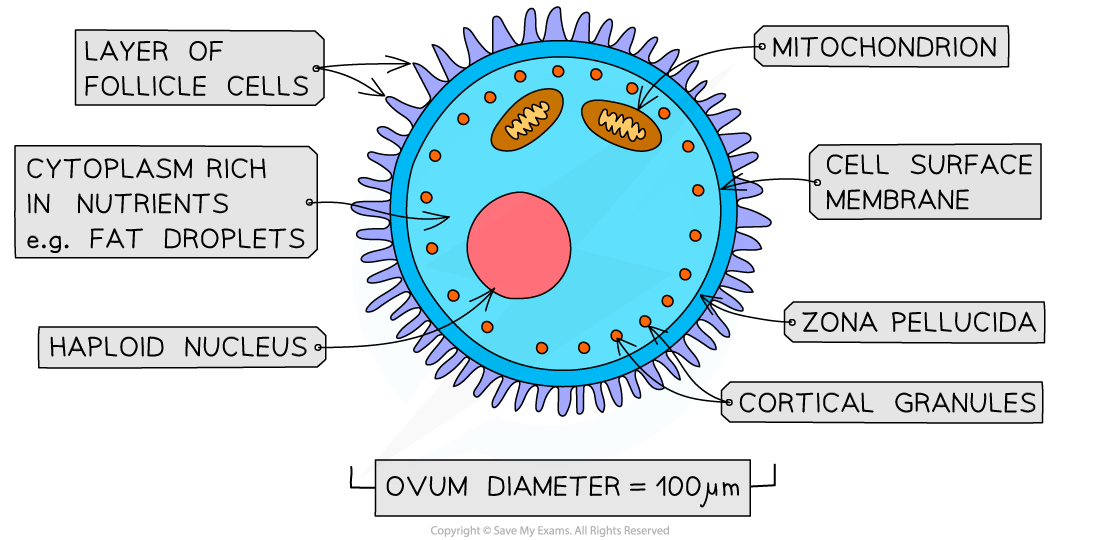Annotating the Seminiferous Tubule and Ovary
Annotating the Seminiferous Tubule
- The testes contain many small tubes, or tubules, known as seminiferous tubules
- The production of sperm, or spermatogenesis, takes place in the lining of the seminiferous tubules
- An annotated diagram of spermatogenesis in the lining of the seminiferous tubule should show the following events
- Cells of the germinal epithelium divide by mitosis to produce diploid spermatogonia cells
- Spermatogonia grow and differentiate into primary spermatocytes
- Primary spermatocytes enter meiosis I, dividing to produce secondary spermatocytes
- Secondary spermatocytes complete meiosis II, producing immature sperm cells known as spermatids
- Spermatids associate with nearby Sertoli cells as they grow and differentiate
- Sertoli cells are sometimes known as nurse cells
- Mature sperm cells, or spermatozoa detach from the Sertoli cells and leave the seminiferous tubule

Annotating the Ovary
- The production of ova, or oogenesis, begins in the ovaries of the female foetus before birth
- An annotated diagram of oogenesis taking place inside the ovary should show the following events
- During the first 7 months of foetal development, cells of the germinal epithelium divide by mitosis to produce diploid cells called oogonia
- During the second half of pregnancy a layer of follicle cells develops around the oogonia to form a primary follicle, which then enters meiosis I
- Note that at this point the process pauses with meiosis I still incomplete
- Hormones released from puberty up until the menopause stimulate the growth of several primary follicles each month
- The hormone that stimulates a primary follicle to mature is FSH
- One of these developing primary follicles completes meiosis I, dividing to form a single haploid secondary oocyte
- Note that the second daughter cell produced during meiosis I receives very little cytoplasm and is known as a polar body
- The secondary oocyte enters meiosis II and leaves the ovary in the process of ovulation
- Note that meiosis II will be completed and an ovum formed after a sperm cell enters the secondary oocyte
- The remains of the follicle develops into a corpus luteum, which degenerates if fertilisation does not take place

Most of the oogenesis process takes place in the ovaries
Annotating the Mature Sperm & Egg
Annotating the sperm
- Sperm and ova are examples of specialised cells, meaning that their structure aids their function
- Special features of sperm cells that relate to function include
- A haploid nucleus that can fuse with an ovum nucleus to form a diploid zygote
- An acrosome containing digestive, or hydrolytic, enzymes to aid entry into the ovum
- Many mitochondria for the release of energy to aid movement
- A tail made of protein microtubules to aid movement

Sperm cells are specialised to enable movement towards and entry into the ovum
Annotating the Egg
- Special features of ova that relate to function include
- A haploid nucleus that can fuse with a sperm cell nucleus to form a diploid zygote
- A surrounding jelly layer, or zona pellucida, that can harden to prevent polyspermy (when the ovum is penetrated by more than one sperm, this can effect embryo development)
- A series of vesicles, or cortical granules, containing digestive enzymes that are released into the zona pellucida to prevent polyspermy
- A cytoplasm rich in nutrients for the developing embryo after fertilisation

Ova are specialised to prevent polyspermy and aid development of the embryo
